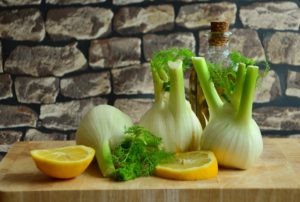In this guide, we’ll explore a diverse collection of plants that harmonize beautifully with peonies, focusing on their growing conditions, aesthetics, and how they enrich the garden environment.
Allium
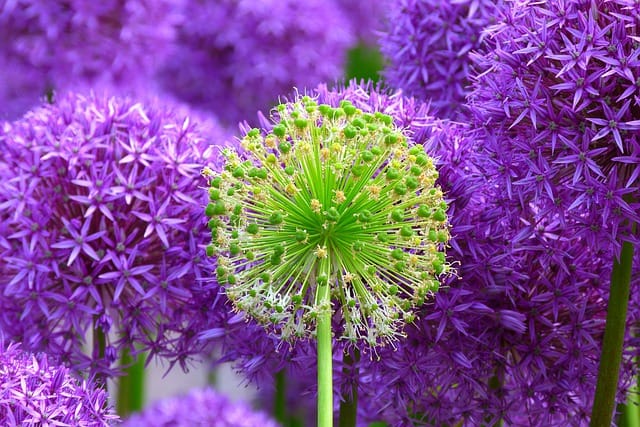
Alliums, with their striking globes of tiny flowers, provide a dramatic contrast to peonies. These bulbous perennials thrive in full sun and well-drained soil, making them easy companions for peonies. Planting alliums in the same garden bed creates a height difference, as alliums typically rise above the peonies, providing a fantastic backdrop. The purple hues of allium blooms often complement the softer pastel colors of peony flowers, especially the pinks and whites. Additionally, alliums attract pollinators, enhancing the overall biodiversity of your garden.
Alyssum
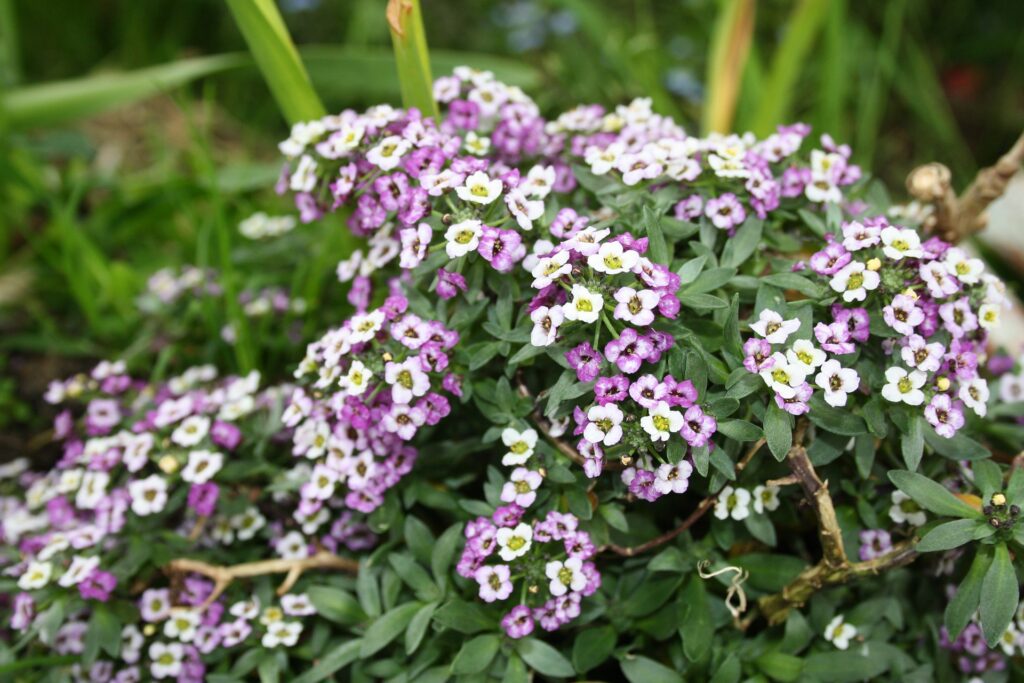
Sweet alyssum is a charming annual that adds a delicate touch to gardens with its tiny, fragrant flowers. These plants prefer full sun to partial shade and thrive in a variety of soil types. The low-growing nature of alyssum makes it an excellent ground cover option, creating a lush carpet beneath your peonies. When planted together, the airy, white blooms of alyssum beautifully accentuate peonies while softening the overall appearance of the garden. Plus, its sweet aroma is a delightful complement to the peony’s more potent fragrance, creating a multisensory experience.
Hydrangea
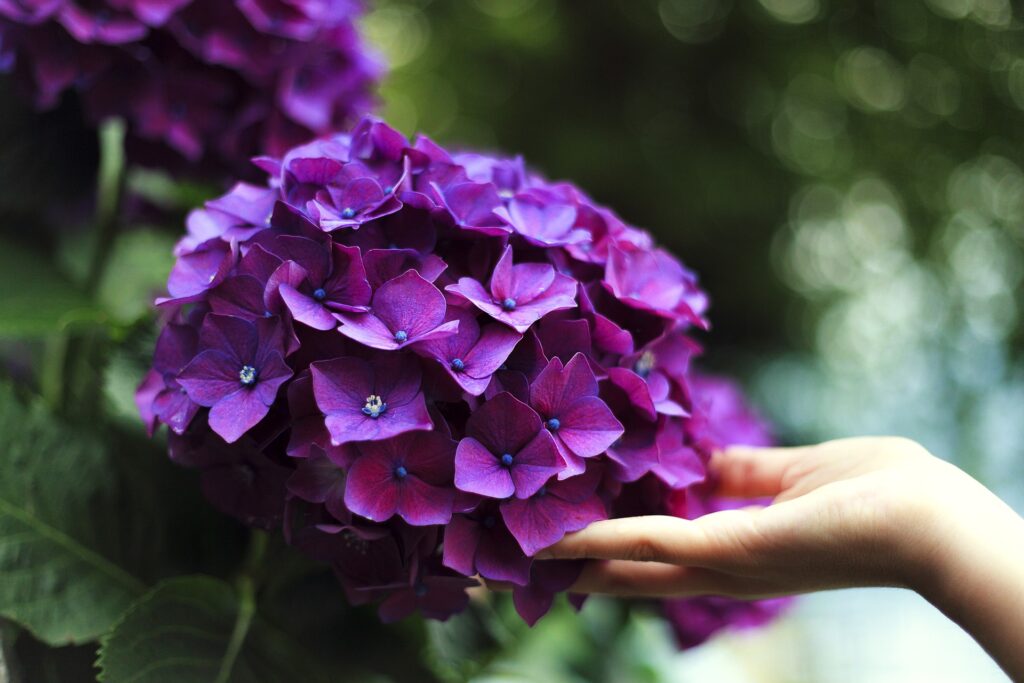
Hydrangeas are a classic companion for peonies, providing lush foliage and large round flower clusters that make a statement. With a variety of colors from vibrant blues to soft pinks and whites, they can coordinate or contrast elegantly with peonies. Hydrangeas thrive in both full sun and partial shade, but it’s essential to note that they appreciate consistent moisture. Their substantial blooms offer a continuous display of color, extending the visual interest in your garden long after peonies have finished blooming. Together, they create a layered effect that is lush and inviting.
Clematis
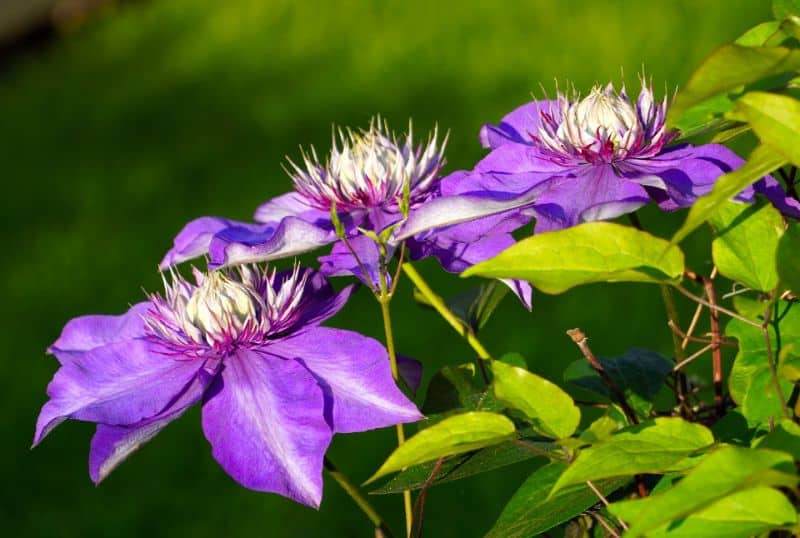
For a touch of vertical interest, consider planting clematis alongside your peonies. This vigorous climbing plant produces stunning flowers that range in color and form, from dainty bell-like shapes to large starry blooms. By providing a trellis or supporting structure, you can allow clematis to climb and intertwine with peony plants, creating a mesmerizing display. Complementary colors can be chosen to enhance the overall aesthetic—think deep purples with pale pink peonies for a summery palette. Clematis prefers well-drained soil and full sun, thriving in the same environment as peonies.
Columbine
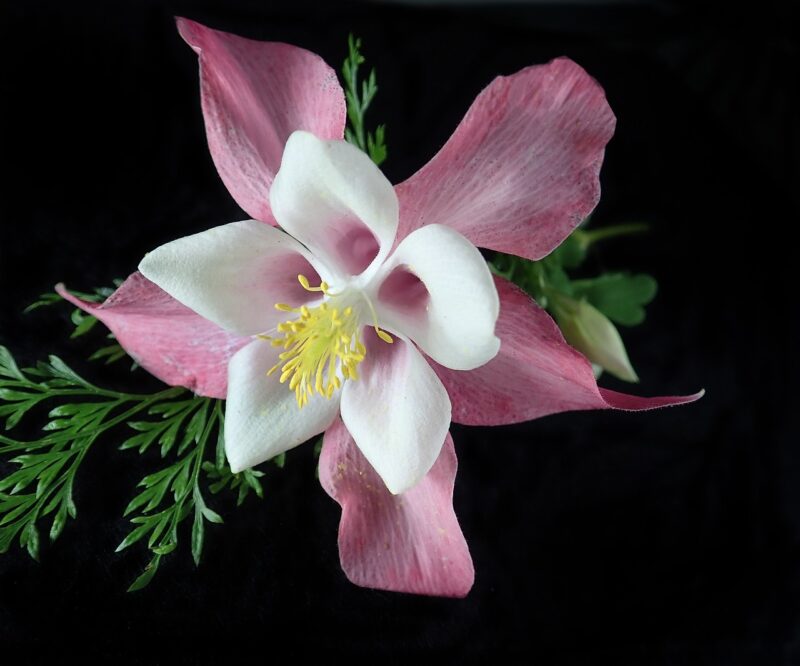
Columbine is another delightful companion plant that adds unique visual interest to the peony garden. Known for their distinct, spurred flowers, columbines come in a variety of hues, including blues, pinks, and yellows. These perennial plants grow well in dappled shade, making them suitable for planting near peonies that also appreciate some afternoon respite from full sun. The height and delicate structure of columbine flowers contrast beautifully with the heavy blooms of peonies, creating an enticing visual dynamic. Plus, columbines attract hummingbirds and butterflies, further enlivening your garden space.
Coneflower
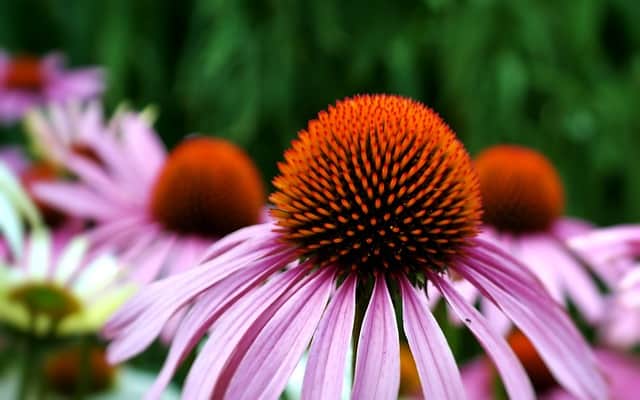
Echinacea, or coneflower, is a resilient perennial that thrives in full sun. With its daisy-like appearance and vibrant purple to orange petals, coneflower makes for a lively companion for peonies. The sturdy, upright form of coneflowers contrasts nicely with the rounded form of peonies, providing height and shaping in the garden. Furthermore, coneflowers are drought-tolerant and attract beneficial pollinators, enhancing the ecological balance of your garden. They bloom later in the season, ensuring a continuous show of color beyond the peony’s flowering window.
Creeping Jenny
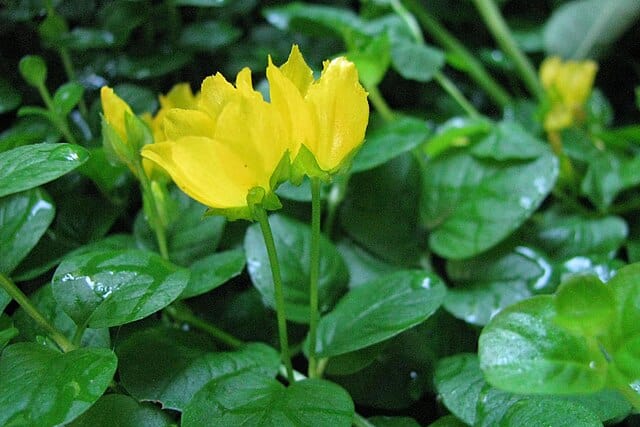
Creeping Jenny is a fantastic ground-cover plant known for its trailing habit and vibrant golden-yellow foliage. Its low growth habit makes it an ideal companion for peonies, adding texture and color beneath their robust flowers. Creeping Jenny thrives in both sunny and partially shaded areas, showcasing its versatility in the garden. This plant not only creates a striking contrast with the vibrant colors of peonies, but its foliage also shifts to a rich bronze in the fall, extending seasonal interest. Together, they create a grounding effect that enriches the overall aesthetic of your garden.
Daylily
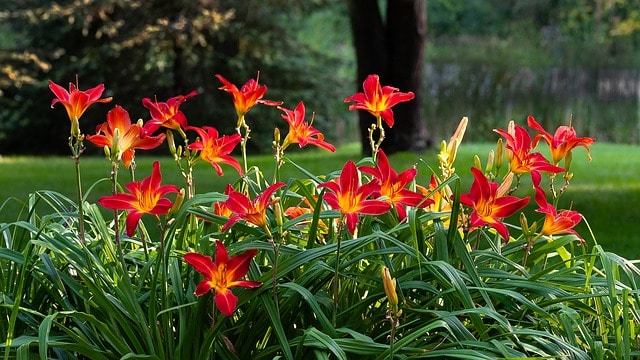
Daylilies are a must-have for any garden, with their easy-care nature and stunning, trumpet-shaped flowers. Available in a rainbow of colors, daylilies bloom profusely and can be found in both tall and short varieties, depending on the look you’re going for. When paired with peonies, daylilies fill in the gaps between their flowering cycles, allowing for a continuous blossoming effect in the garden. Their arching foliage also complements the peony’s stout stems, adding a dynamic and layered look. They thrive in sunny spots and are known for their drought tolerance, which makes them excellent companions.
Hosta
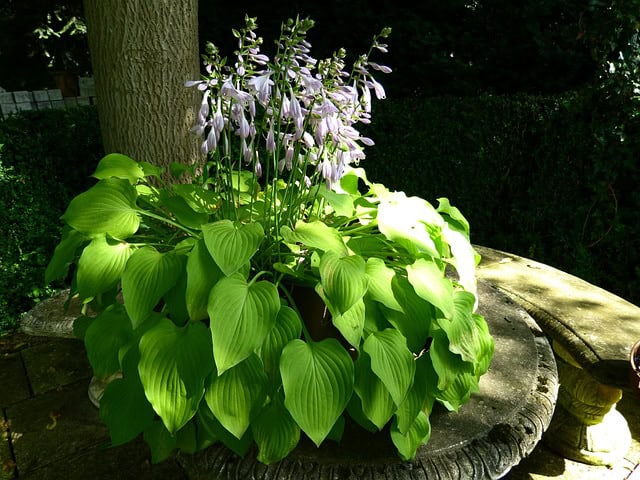
If you’re aiming for a shade-friendly garden around your peonies, hostas are a perfect choice. Known for their lush green leaves often variegated with white or yellow, hostas provide an elegant underplanting option that thrives in shade or partial sun. The contrast of large hosta foliage against the vibrant blooms of peonies creates a striking visual balance, allowing both plants to shine. The different sizes and shapes of hostas add variety to the garden landscape, creating an interesting backdrop for the tall peony plants. Hostas are also low-maintenance and provide a solid structure throughout the growing season.
Iris
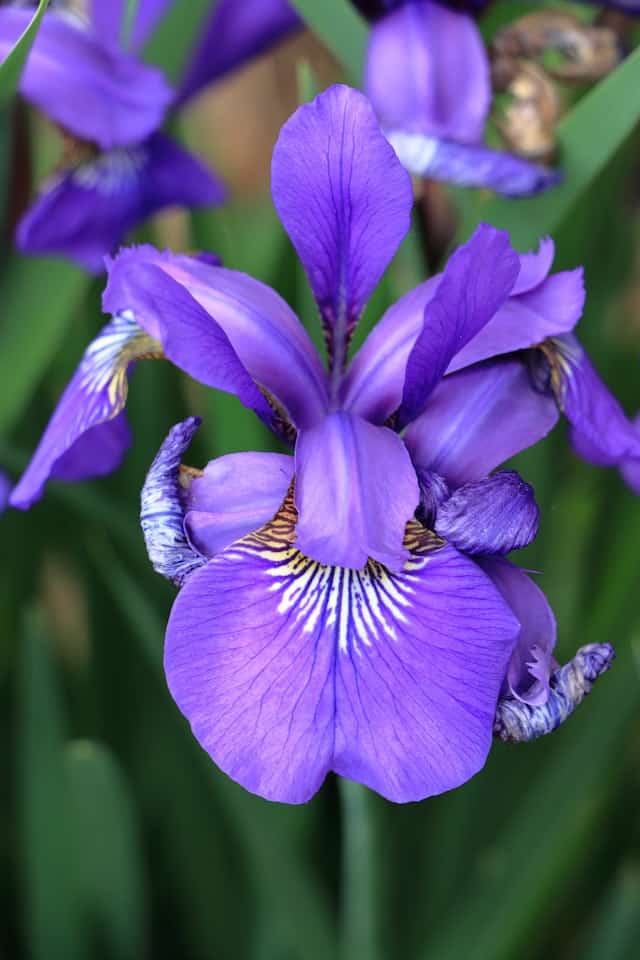
The stunning and dramatic blooms of iris are a wonderful accent to peony gardens. With their intricate blooms and rich colors ranging from vibrant purples to soft whites, irises can create a stunning visual symphony when planted alongside peonies. Irises bloom in mid to late spring, overlapping beautifully with peonies and ensuring a colorful display in your garden. They prefer full sun and well-drained soil, similar to peonies, making them easy companions. The architectural shape of iris flowers adds height and distinction, complementing the lushness of the peony blooms.
Larkspur
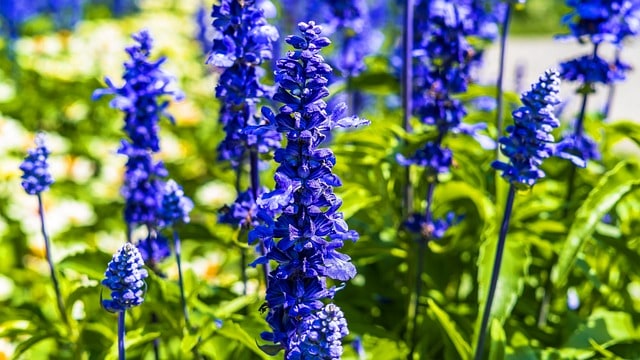
Larkspur, with its tall spikes of colorful flowers, provides a striking vertical element in a peony garden. Available in shades of blue, purple, pink, and white, larkspur can create a visually stunning backdrop for peonies. This plant thrives in full sun and well-drained soil and often flowers in early to mid-summer, making it a lovely addition to the garden as the peonies start to fade. The delicate, dainty flowers of larkspur bring a touch of whimsy to the arrangement, balancing out the heavy blooms of peonies with their airy elegance.
Lupine
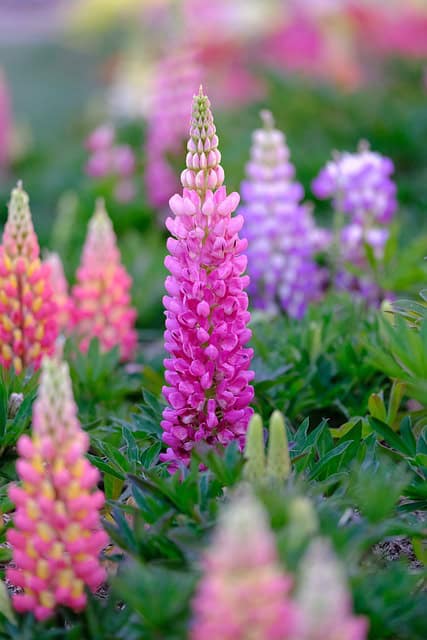
Lupines are known for their spire-like clusters of flowers in captivating colors, ranging from soft pastels to bold brights. Growing in well-drained soil in full sun to partial shade, these perennial plants can elevate your peony garden with their architectural forms. Positioning lupines alongside peonies allows for a delightful visual interaction; the tall, vertical blooms of lupine can dance gracefully around the shorter peony flowers. Moreover, lupines are great for attracting pollinators, making your garden an inviting space for bees and butterflies.
Masterwort
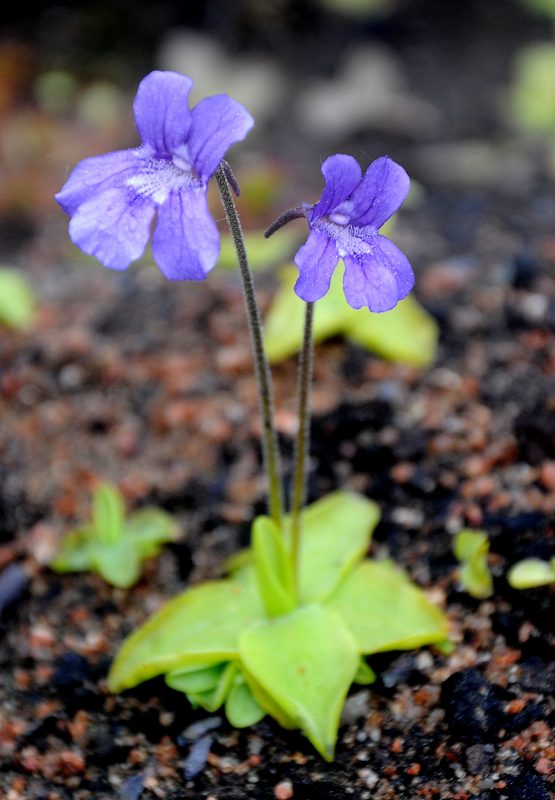
For something a bit different, masterwort, or Astrantia major, makes a charming companion for peonies. With its unique, star-like flowers and ability to bloom in a range of colors including white, pink, and green, masterwort is a standout plant that adds depth and texture to your garden. It prefers partial shade and moist, well-drained soil, which complements peonies that may also appreciate a bit of afternoon shade. Masterwort provides an excellent late spring-to-summer blooming option, ensuring interesting textures and colors in your garden throughout the growing season.
Monkshood
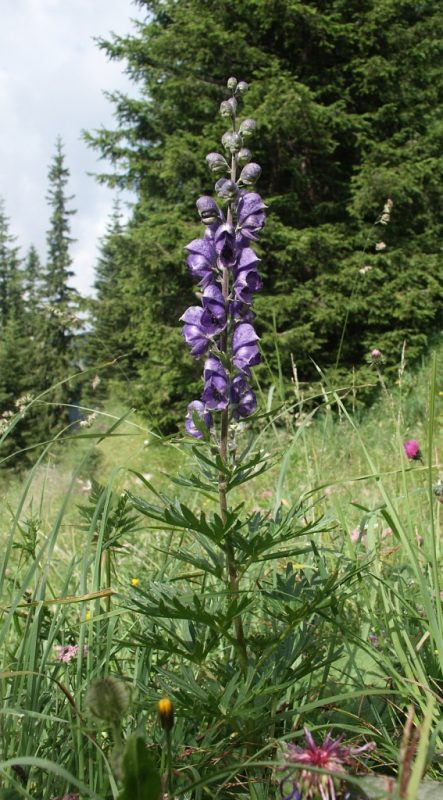
Monkshood, or Aconitum, brings an air of elegance and mystery to any garden with its tall, hooded flowers. In shades of blue to purple, these striking blooms provide an intriguing contrast alongside breezy peonies. Monkshood thrives in partial shade and prefers moist, well-drained soil, matching the needs of peonies that enjoy a cool root environment. The towering height of monkshood flowers enhances the layered look of a mixed border, giving the garden a sophisticated and deliberate aesthetic.
Daisy
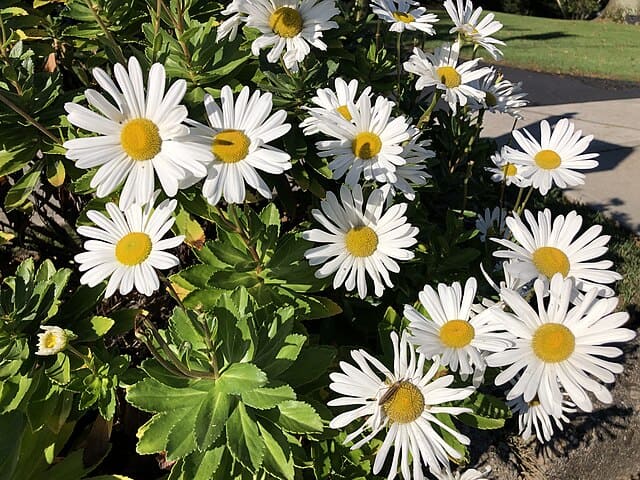
The cheerful and classic daisy is a beloved garden staple that pairs wonderfully with peonies. With their simple, white petals and bright yellow centers, daisies evoke a sense of laid-back charm that effortlessly complements the opulence of peonies. These hardy perennials thrive in full sun and can survive in a variety of soil types, making them low maintenance. Planting daisies near peonies allows for a delightful contrast in form and bloom size, creating an inviting and harmonious garden space. Their prolonged blooming period ensures that your garden stays lively throughout the season.
Pansy
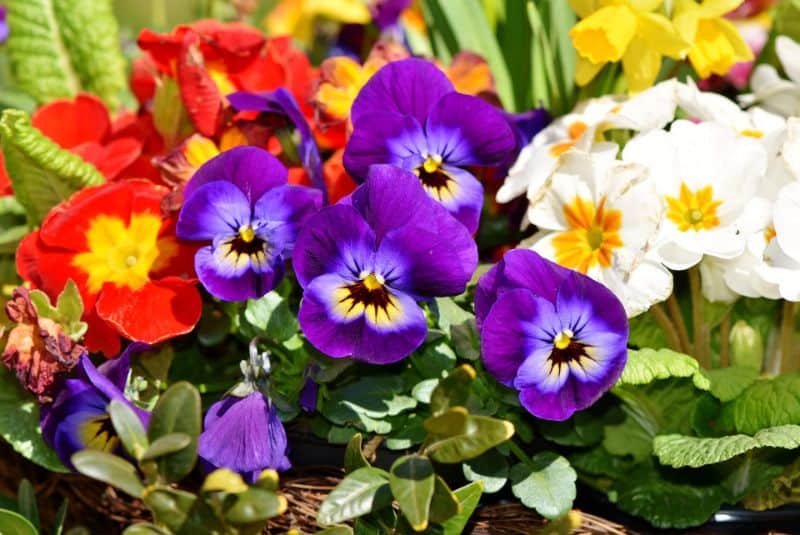
If you’re looking for a pop of early spring color, pansies are an excellent choice to plant alongside peonies. These cheerful annuals are known for their wide variety of colors and cherished for their ornamental value. Pansies thrive in cooler weather and can often be planted in early spring, filling in the gaps around newly emerging peonies. Their low-growing habit and vibrant colors create a delightful foreground that enhances the richness of the peony blooms. Additionally, pansies can provide a beautiful transition from early spring to the heart of summer.
Rose
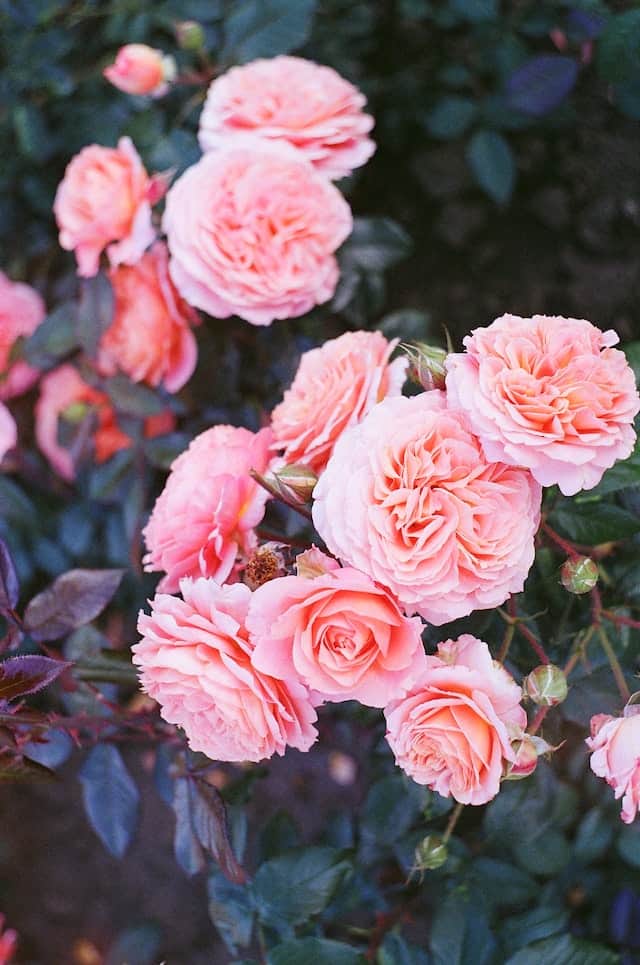
A dynamic duo, peonies and roses together create a luxurious floral display that is simply breathtaking. They complement each other beautifully; the peony’s rounded, full forms harmonize with the classic blooms of roses. With a myriad of varieties available, you can select rose colors that either enhance or contrast with your peonies. Both of these flowers thrive in similar conditions, preferring full sun and well-drained soil. They also attract similar pollinators, enhancing the biodiversity of your garden while creating a stunning visual effect that is truly captivating.
Salvia
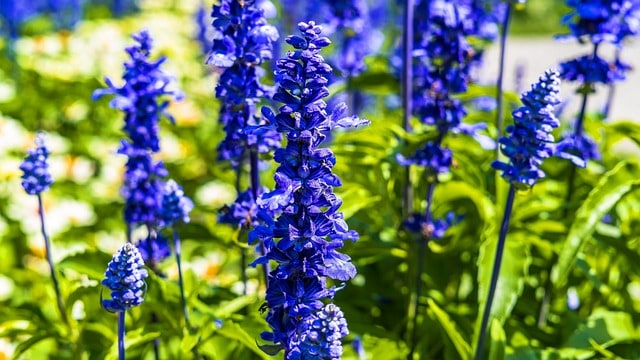
With their spikes of blue, purple, or white flowers, salvias are an excellent addition to any peony garden. These drought-tolerant perennials thrive in full sun and attract a wide variety of beneficial insects, including bees and pollinators. Pairing salvia with peonies creates a beautiful textural contrast, with the upright growth of salvia rising above the peony’s rounded forms. The long flowering period of salvia extends your garden’s colorful display, adding vibrancy and interest after the peonies have peaked.
Sea Holly

Sea holly, or Eryngium, is a distinctive plant known for its spiky blue or green flower heads and thistle-like appearance. This unique structure makes it an intriguing contrast to the soft, petal-heavy blooms of peonies. Sea holly prefers well-drained soil and thrives in full sun, making it an easy companion. The combination of peonies and sea holly creates a garden that is both visually exciting and ecologically diverse, attracting a variety of pollinators while providing an unusual aesthetic character.
Snow in Summer
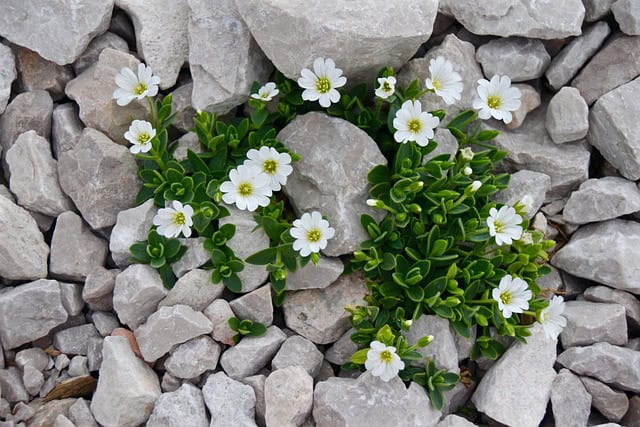
For a low-growing groundcover option, Snow in Summer (Cerastium tomentosum), is an excellent choice. This perennial displays an abundance of white flowers in the early summer, providing a bright foil for the rich colors of peonies. It thrives in full sun and well-drained soil and is perfect for cascading over edges or filling in spaces around peonies. The contrast of textures and colors when combined with the bold shapes of peony blooms makes for a captivating ground-level visual delight.
Sweet Woodruff
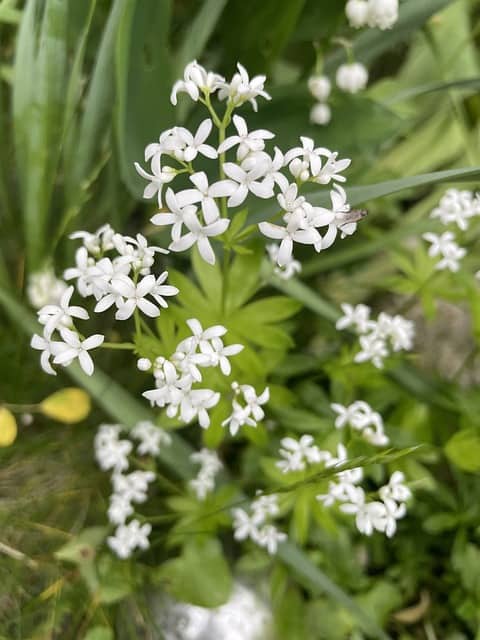
Sweet woodruff (Galium odoratum) is a shady groundcover known for its delightful fragrance and dense foliage. This charming plant thrives in partial to full shade, making it perfect for underplanting peonies that may enjoy some respite from harsh afternoon sun. With its tiny white flowers and whorled leaves, sweet woodruff adds a soft and lush carpet around your peonies. The enchanting scent released when the leaves are crushed makes walking past them a delightful experience, enhancing the overall sensory appeal of your garden.




